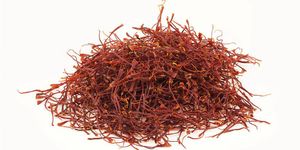Scientists are taking a closer look at the main breakdown product of aspirin, called salicylic acid, and its potential to treat neurodegenerative diseases, such as Alzheimer’s and Parkinson’s.
Salicylic acid binds to an enzyme called GAPDH, which is believed to play a major role in such diseases. The acid stops the enzyme from from moving into a cell’s nucleus, where it can trigger the cell’s death.
Daniel Klessig, a professor at Boyce Thompson Institute and Cornell University, has studied the actions of salicylic acid for many years, but primarily in plants. Salicylic acid is the critical hormone for regulating the plant immune system. Previous studies have identified several targets in plants that are affected by salicylic acid, and many of these targets have equivalents in humans.
In the new study published in
PLOS ONE, the researchers performed high-throughput screens to identify proteins in the human body that bind to salicylic acid.
GAPDH (Glyceraldehyde 3-Phosphate Dehydrogenase) is a central enzyme in glucose metabolism, but plays additional roles in the cell. Under oxidative stress—an excess of free radicals and other reactive compounds—GAPDH is modified and then enters the nucleus of neurons, where it enhances protein turnover, leading to cell death.
The anti-Parkinson’s drug deprenyl blocks GAPDH’s entry into the nucleus and the resulting cell death. The researchers discovered that salicylic acid also is effective at stopping GAPDH from moving into the nucleus, thus preventing the cell from dying.
The enzyme GAPDH, long thought to function solely in glucose metabolism, is now known to participate in intracellular signaling,” says study coauthor Solomon Snyder, professor of neuroscience at Johns Hopkins University. “The new study establishes that GAPDH is a target for salicylate drugs related to aspirin, and hence may be relevant to the therapeutic actions of such drugs.”
The researchers also found that a natural derivative of salicylic acid from the Chinese medical herb licorice and a lab-synthesized derivative bind to GAPDH more tightly than salicylic acid. Both are more effective than salicylic acid at blocking GAPDH’s movement into the nucleus and the resulting cell death.
Earlier this year, Klessig’s group identified another novel target of salicylic acid called HMGB1 (High Mobility Group Box 1), which causes inflammation and is associated with several diseases, including arthritis, lupus, sepsis, atherosclerosis, and certain cancers.
Low levels of salicylic acid block these pro-inflammatory activities, and the above mentioned salicylic acid derivatives are 40 to 70 times more potent than salicylic acid at inhibiting these pro-inflammatory activities.
“A better understanding of how salicylic acid and its derivatives regulate the activities of GAPDH and HMGB1, coupled with the discovery of much more potent synthetic and natural derivatives of salicylic acid, provide great promise for the development of new and better salicylic acid-based treatments of a wide variety of prevalent, devastating diseases,” says Klessig.
The National Science Foundation and US Public Health Service funded the study.
Originally published on
futurity.org









